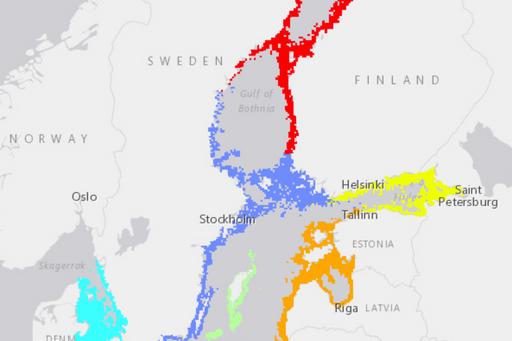Population structure and management units
To efficiently manage and conserve genetic biodiversity, a first step is to know the population genetic structure of the species of interest. Are all populations closely related forming meta-populations, or are there several genetically unique populations (salmonids being a well-known example)? The answer will help you identify a relevant geographic area for management activities.

To visualize management units, we have produced generalized maps of population structure for some species. They are based on oceanographic circulation models combined with biological dispersal traits of the species in question – e.g. gamete release season, how many days spores drift in the water, possible vertical behaviours etc. The map above (click here for larger view) shows such a modelled population structure for bladder wrack. Also, for some species we have modelled population structure maps based on genetic information. See section on Species management advice.
General management advice
- Do not fragment the green infrastructure within each management unit (colour) to ensure dispersal among the populations living there. This will prevent population declines, enhance gene flow and reduce loss of genetic diversity, and impede inbreeding due to isolation.
- Transplanting individuals between management units should be done only after careful consideration. The transplanted individuals may not survive in the new environment, and could also “gene contaminate” local populations.
- Recognize that populations in isolated units/areas might have evolved unique and valuable local adaptations.